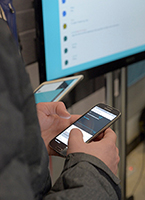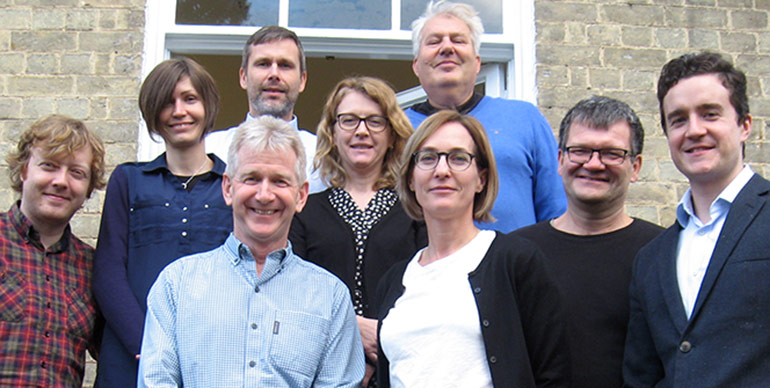Developing and enhancing classroom dialogue by using Talkwall to 'Think Together'

Today's students bring a wealth of experience with digital tools to the classroom and learn in increasingly digitised schools. Yet teachers can lack a pedagogy that takes into account the digital competence of students and, therefore, may not best exploit opportunities to develop the 21st-century skills students will need in the modern world.
Research demonstrates how students who are taught dialogic skills can show enhanced critical thinking and collaborative problem solving. There is also robust evidence demonstrating that the quality of classroom talk has a measurable impact on standards of attainment and can act as a predictor of students’ learning.
Objectives
The DiDiAC project commenced in April 2016 to develop new knowledge to help understand how students learn in contemporary digitalised schools and across three key knowledge domains – language, social science and natural science. The project will integrate the use of a bespoke microblogging tool and elements of the ‘Thinking Together’ approach to investigate:
- The potential of digital technology to enhance existing (and promote new) forms of classroom dialogue, provide a visualisation of ‘interthinking’ and prompt/direct participation in collaborative activities.
- The skills that need to be attained in order for students to master digitalised communicative contexts, and how teachers can support this mastery through their pedagogy.
- How 21st-century competences (e.g. critical thinking and collaboration) are developed through the use of such digital technology.
Talkwall
 Developed by the University of Oslo, Talkwall is a microblogging tool for engaging students in collective classroom interaction, providing a digital link to the high quality discussion that aids learning.
Developed by the University of Oslo, Talkwall is a microblogging tool for engaging students in collective classroom interaction, providing a digital link to the high quality discussion that aids learning.
Using Talkwall, a teacher formulates a question or a challenge before students, individually or in groups, post messages to a shared ‘wall’ (e.g. large screen/projector). These messages can be interactively arranged, supporting the immediate visualisation of ideas. Hashtags and a short message format (max 140 characters) help to promote various important learning strategies, such as condensing information and identifying key concepts.
Project Details
![]()
The time frame for DiDiAC is April 2016 to April 2020. The project is funded by The Research Council of Norway (FINNUT/Project No: 254761).
DiDiAC builds on a long-standing collaboration between research groups at the Department of Education, University of Oslo and the Faculty of Education, University of Cambridge.
University of Cambridge: Paul Warwick (Principal Investigator - UK), Louis Major (Lead Research Associate),
Vic Cook (Research Associate) & Maria Vrikki (Research Associate).
University of Oslo: Ingvill Rasmussen (Project Manager/Principal Investigator - Norway), Ole Smørdal, Kari Anne Rødnes, Sten Runar Ludvigsen and Jo Inge Johansen Frøytlog.
Here you will find a review of the research written by three of our research teachers. It will give you a flavour of their experiences from ’the other side of the research fence’.

